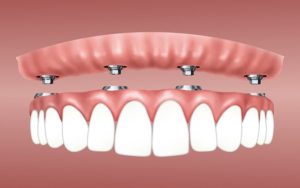In this blog we will look at the advantages, or if you want, the pros of white filling material…At the same time, we will compare them to Amalgam (silver) fillings. Here we go!
1) Esthetics: This is the main advantage over silver (amalgam) fillings. There are different shades of white filling material which we can match perfectly to that of an existing tooth.
2) Composite filling material actually bonds to tooth structure. This has a way of ‘tying together’ and making the whole tooth structure stronger. If there is minimal tooth structure left, by ‘bonding’ white filling material onto it, we will create a structure that is stronger and more cohesive than the tooth’s previous state.
Question: What is the mechanism in which we attain a strong bond of white filling material onto the enamel? Answer: By acid etching. This is a process that ‘prepares’ the tooth structure… Acid etch is like a ‘conditioner’ which when applied to enamel causes irregularities on its surface. It is these irregularities which the composite will adhere to. Acid etching provides a strong bond of the composite filling material to the tooth structure.
White filling material really bonds onto tooth structure much like glue. This is unlike amalgam which relies on the ‘geometry’ or structural integrity of the cavity preparation to retain the filling.
As mentioned previously, if there is very little tooth structure left, white filling material can bond onto it like glue. But silver filling material would not likely adhere to minimal tooth structure because it needs some type of structural shape i.e. a box, to retain it.
3) White filling material can often be used in place of a crown i.e. for a front tooth. We see this often in front teeth that have white filling material on their front surface. The advantages of this are:
– Less costly than a crown.
– Less tooth structure needs to be removed than for a crown.
However, crowns in general are more durable and have a greater longevity than white filling material.
4) White filling material can be used to repair chipped, broken or worn teeth…amalgam cannot do this.
5) Additionally, if a white filling breaks, one can easily repair it by bonding on more white filling material. If an amalgam breaks, it is highly unlikely that you would be able to add more silver filling material to it…one may have to redo the whole filling.
6) There is no concern of mercury being released into the water system when a white filling is removed from a tooth as opposed to what may occur when a silver filling is removed. However, nowadays amalgam separators are required to be in all offices to prevent contamination of the community water supply.
7) When removing a white filling, there is also no risk of mercury exposure to the dentist in the form of vapour as opposed to when a silver filling is removed.
These are some of the advantages of white filling material.
In the next blog, we will look at the disadvantages of white filling material…till then.







